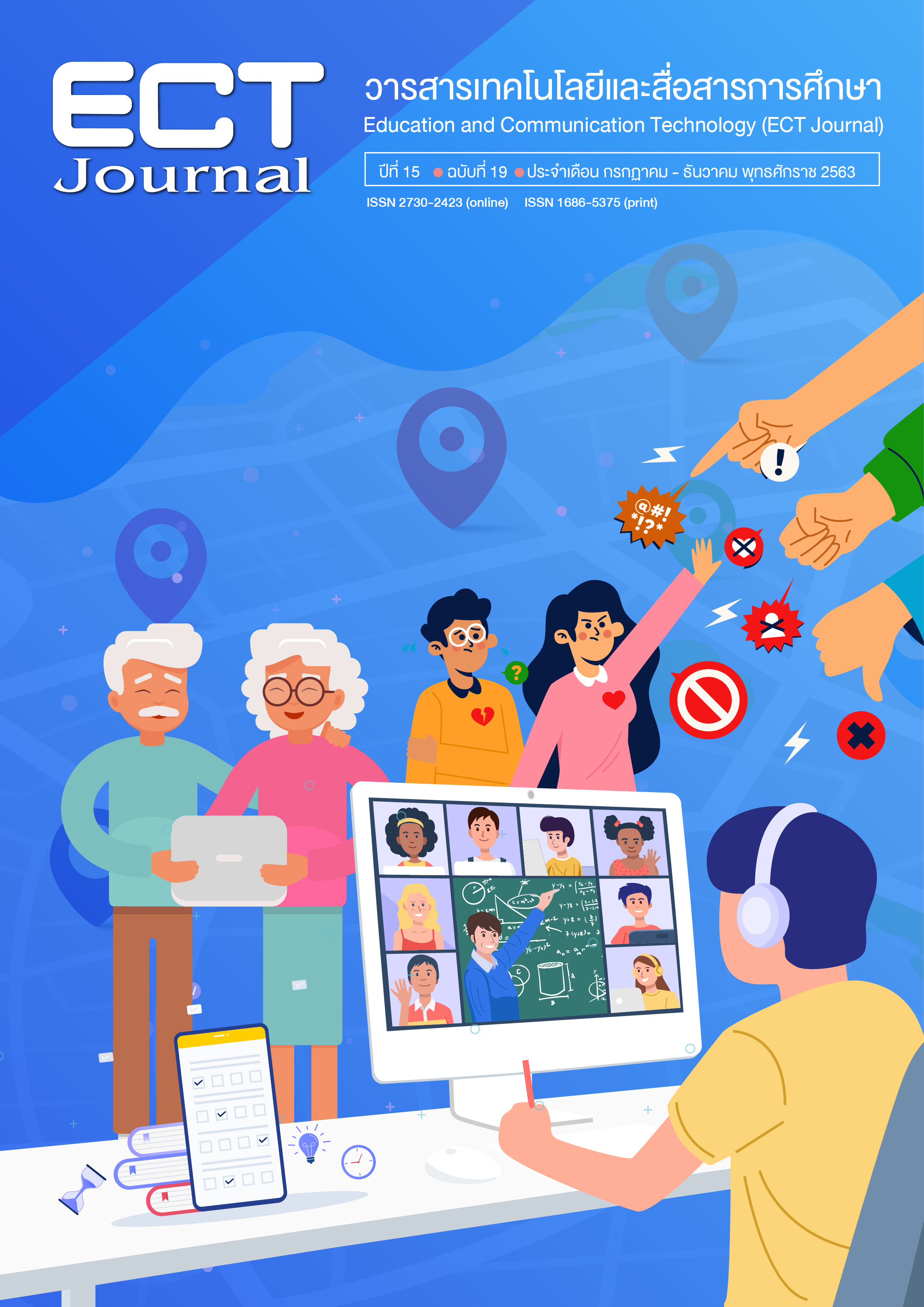DEVELOPMENT OF A VIRTUAL FIELD TRIP MODEL WITH GEOGRAPHIC INQUIRY PROCESS Integrated with 3D MAP FOR UPPER SECONDARY SCHOOL STUDENTS
Keywords:
Virtual Field Trip, geographic inquiry process, 3D mapAbstract
The purpose of this research was to study experts’ opinions and develop the Virtual Field Trip model with geographic inquiry process integrated with 3d map for upper secondary school students. The sample group of phase 1’s research included experts from various field comprising: educational technology experts, social study experts, and geographical study experts. The research instruments consisted of an expert interview form and a model evaluation form. The collected data were analyzed through the use of mean () and standard deviation (S.D.). Another purpose of this research is to study students’ opinions toward the developed model through the consideration between 2 aspects: preparation and learning activities. To answer the purposes of the research in phase 1 and 2, the researcher had collected qualitative data from interviewing the educational technology and geographical study experts. On the other hands, to answer another purpose of the research, the researcher had collected quantitative data from using developed model with 30 students. The results of the study were generated into five components and four steps. The five components were: (1) information sources; (2) teaching techniques and activities; (3) students and teachers; (4) education tools and (5) evaluation. The four steps were: (1) preparation; (2) introduction; (3) body and (4) conclusion and evaluation. The result indicated that student’s opinions toward the developed model is at the highest level (= 4.50, S.D.= 0.85)
Downloads
Published
How to Cite
Issue
Section
License
1. ทรรศนะและข้อคิดเห็นใด ๆ ที่ปรากฏอยู่ในวารสาร ECT Education and Communication Technology Journal เป็นของผู้เขียนโดยเฉพาะ สำนักเทคโนโลยีการศึกษา มหาวิทยาลัยสุโขทัยธรรมาธิราช และกองบรรณาธิการไม่จำเป็นต้องเห็นพ้องด้วย
2. กองบรรณาธิการของสงวนลิขสิทธิ์ในการบรรณาธิการข้อเขียนทุกชิ้น เพื่อความเหมาะสมในการจัดพิมพ์เผยแพร่






